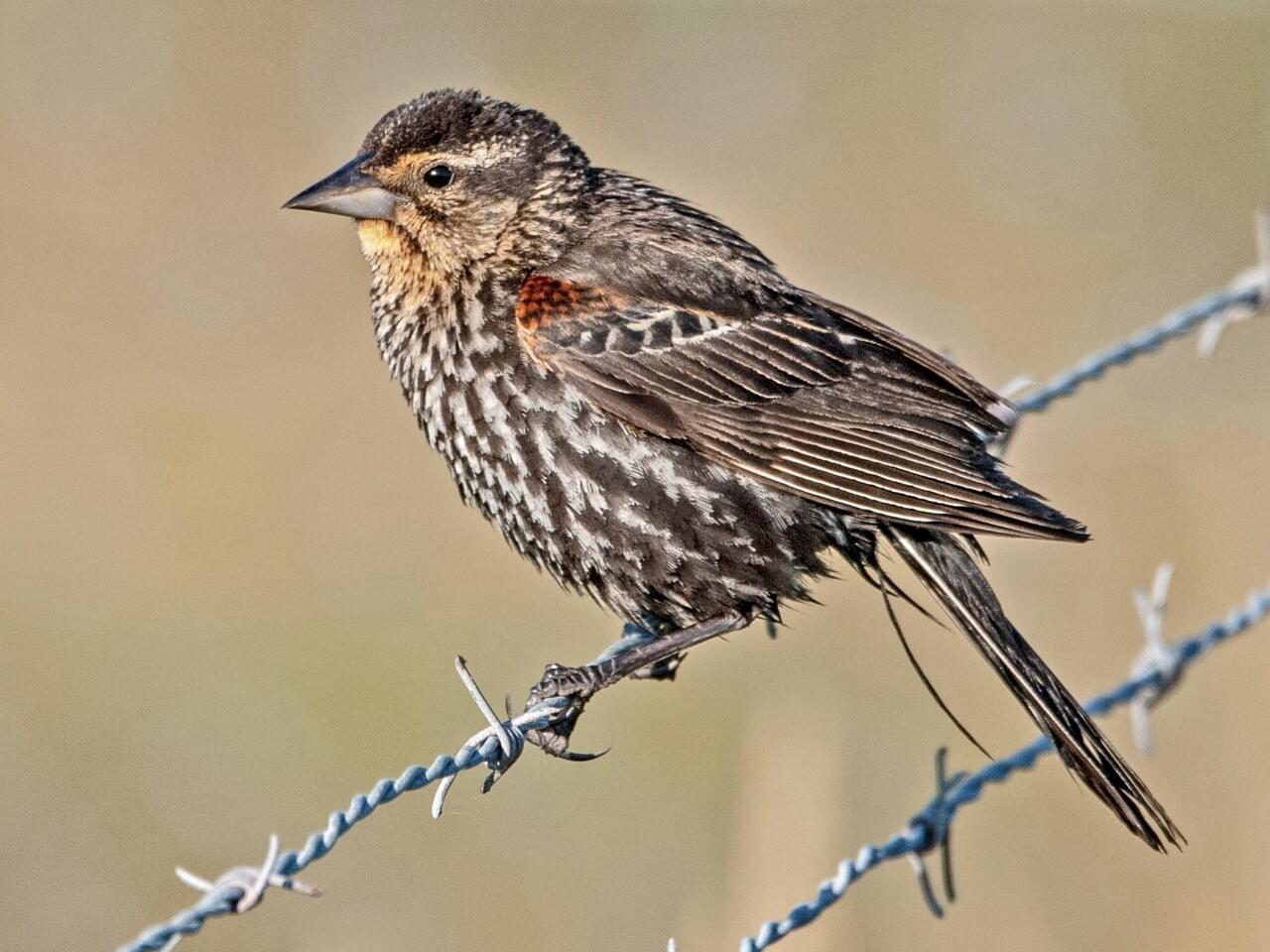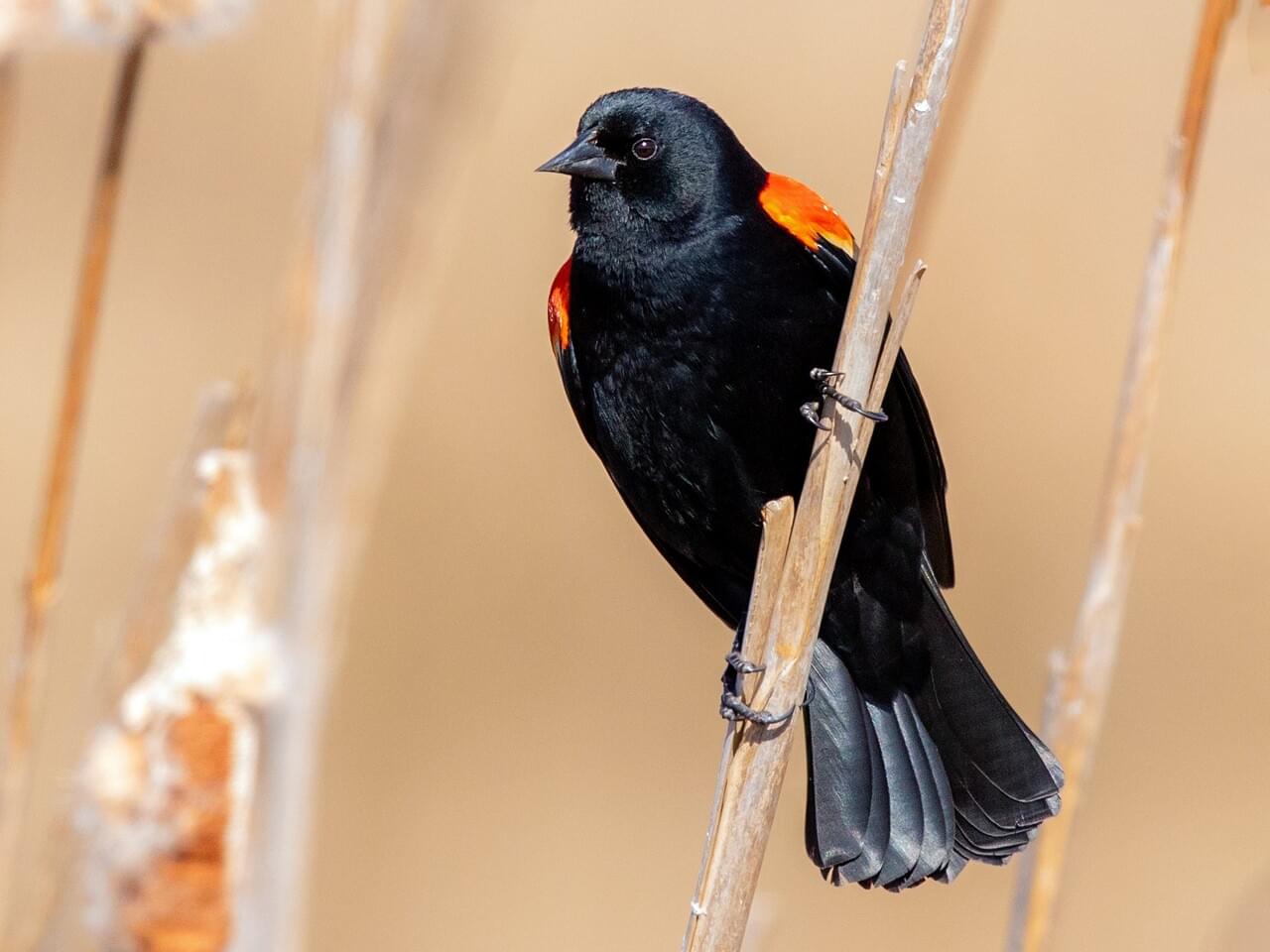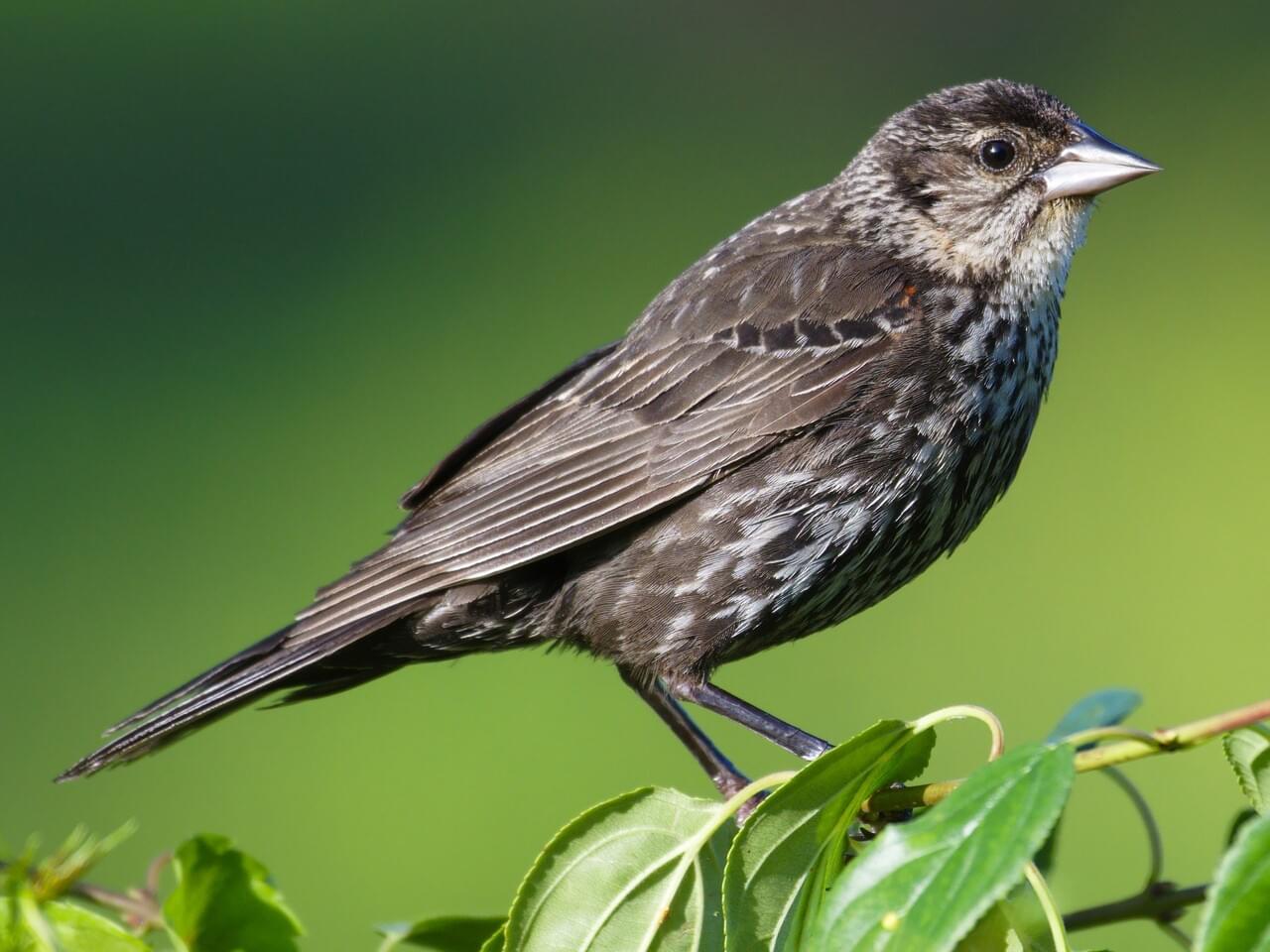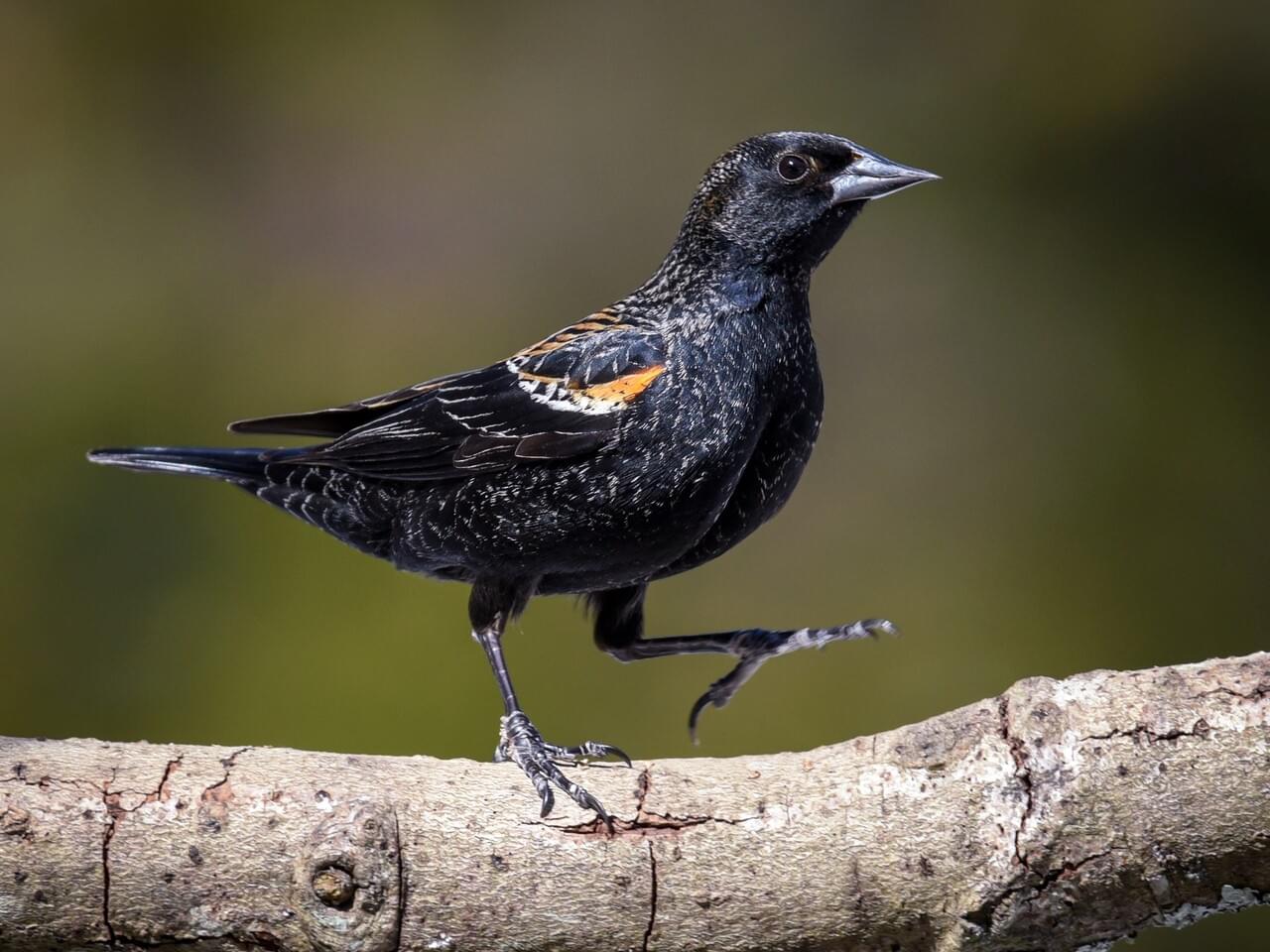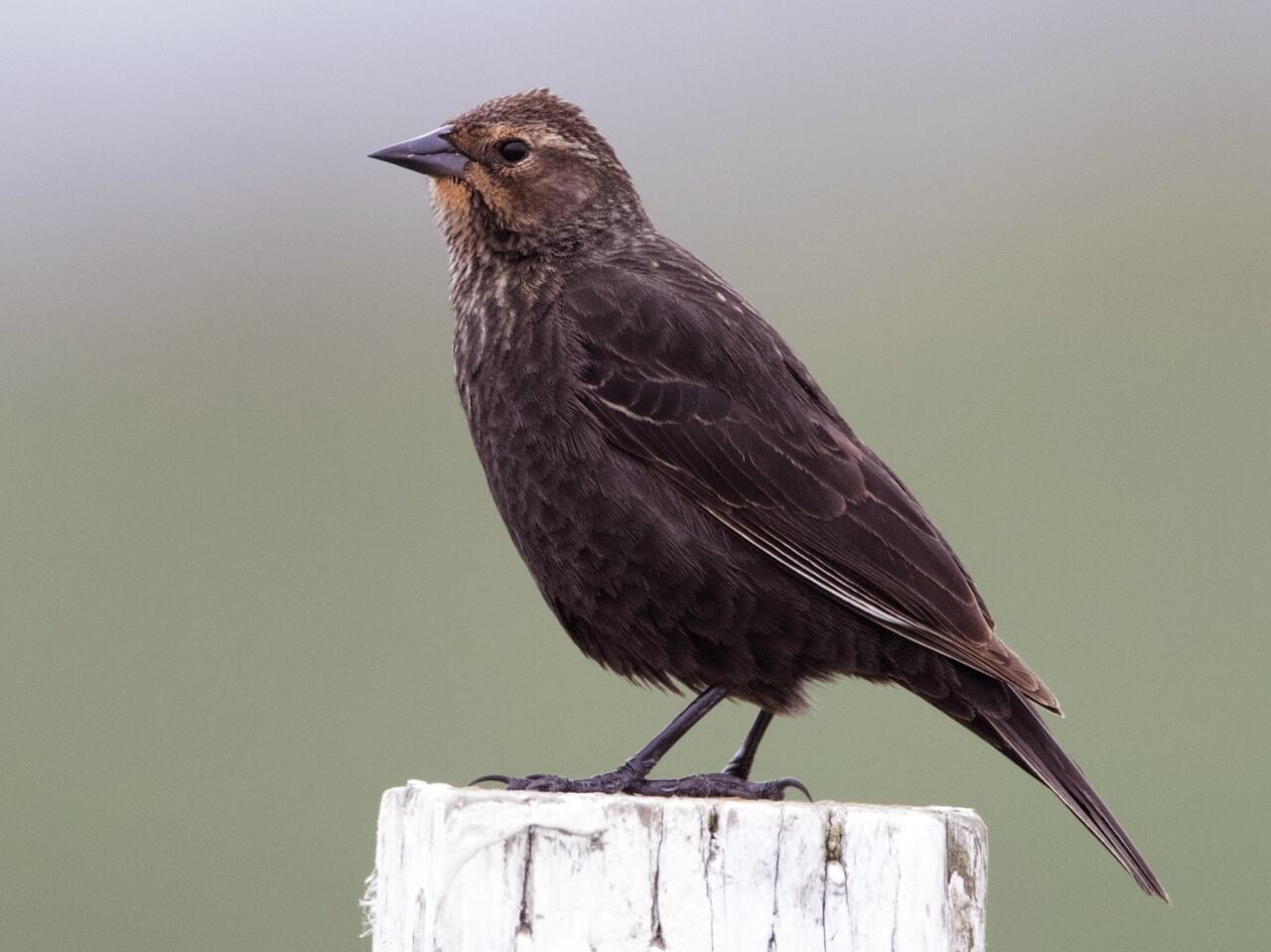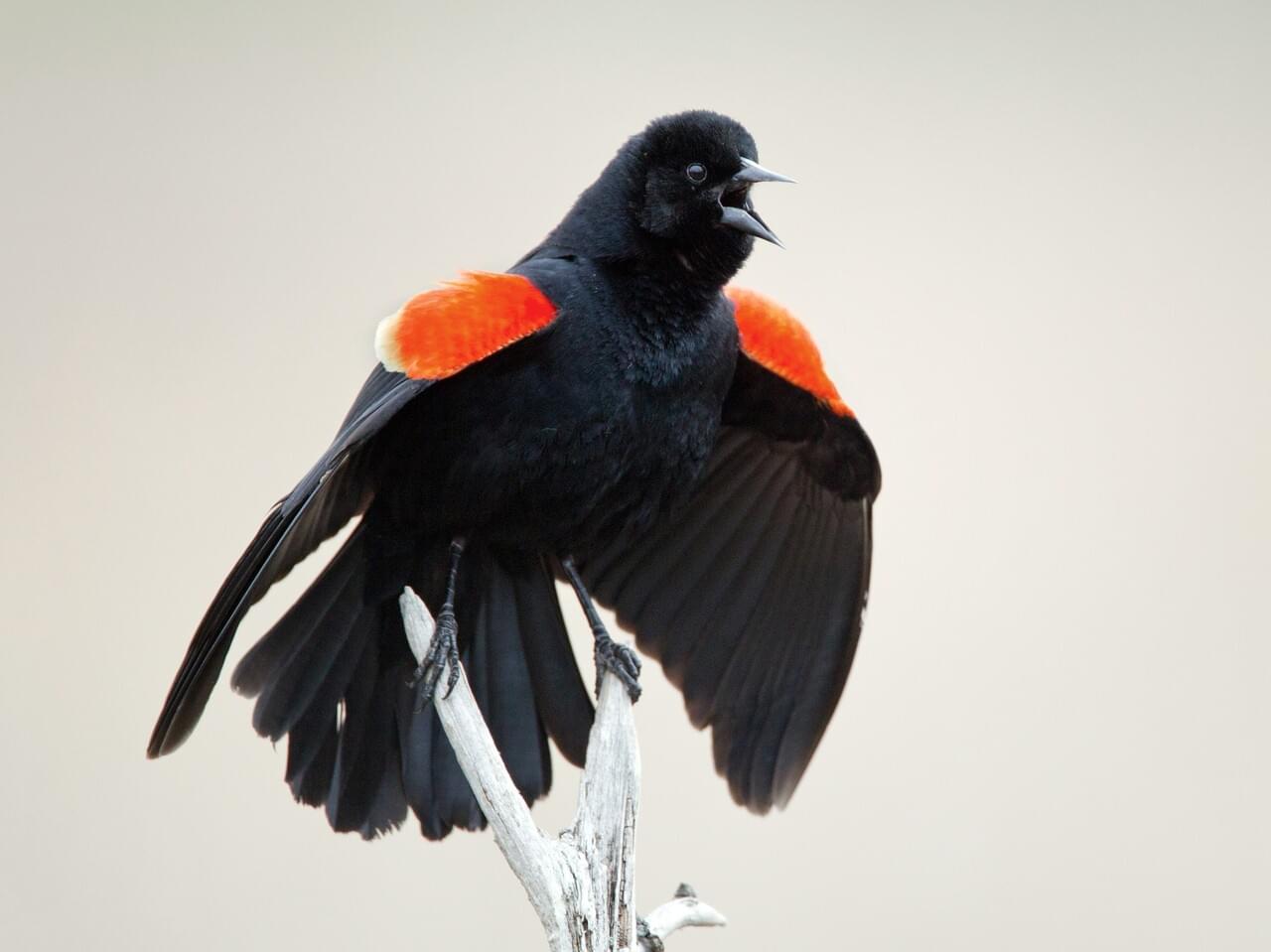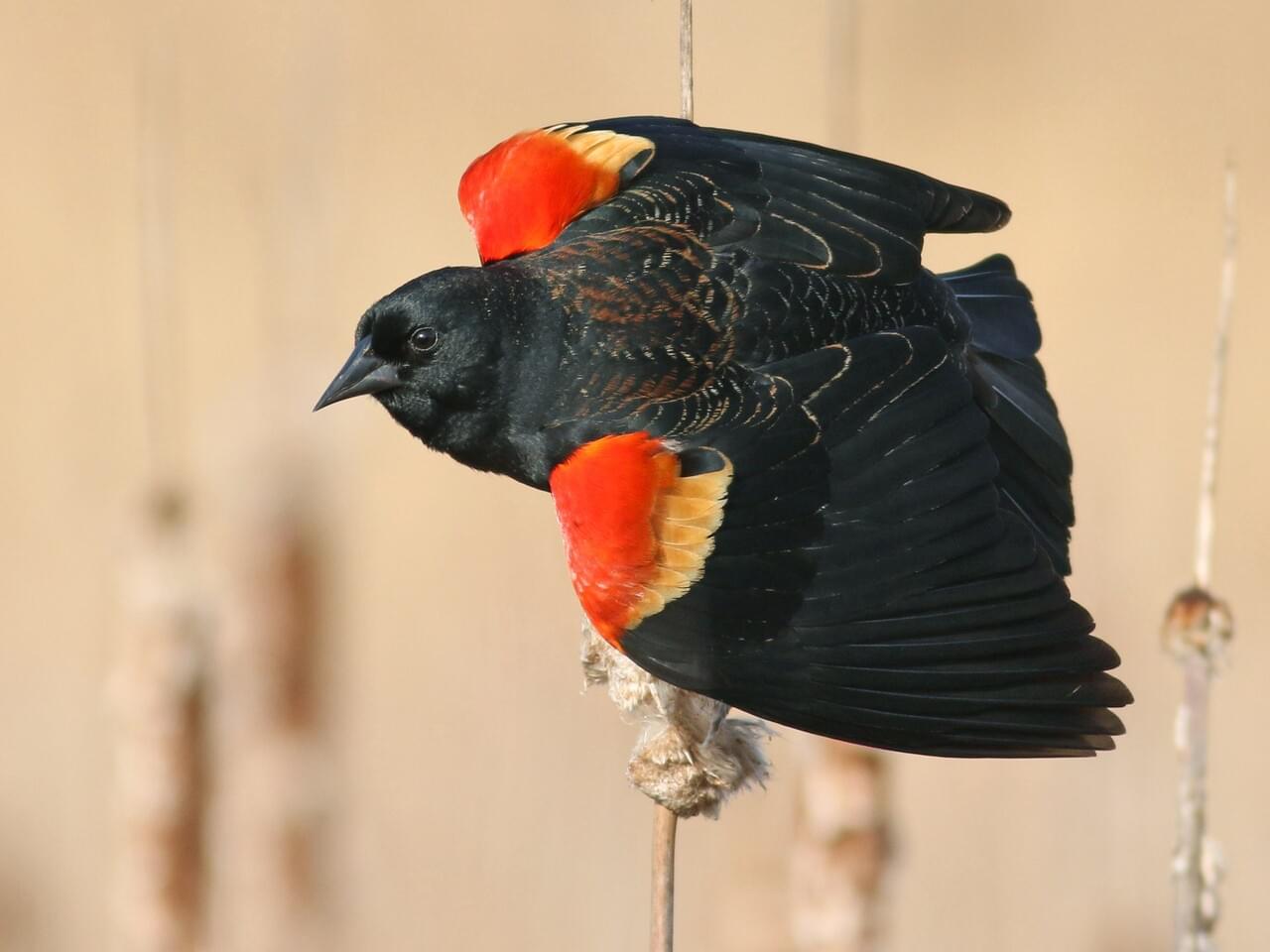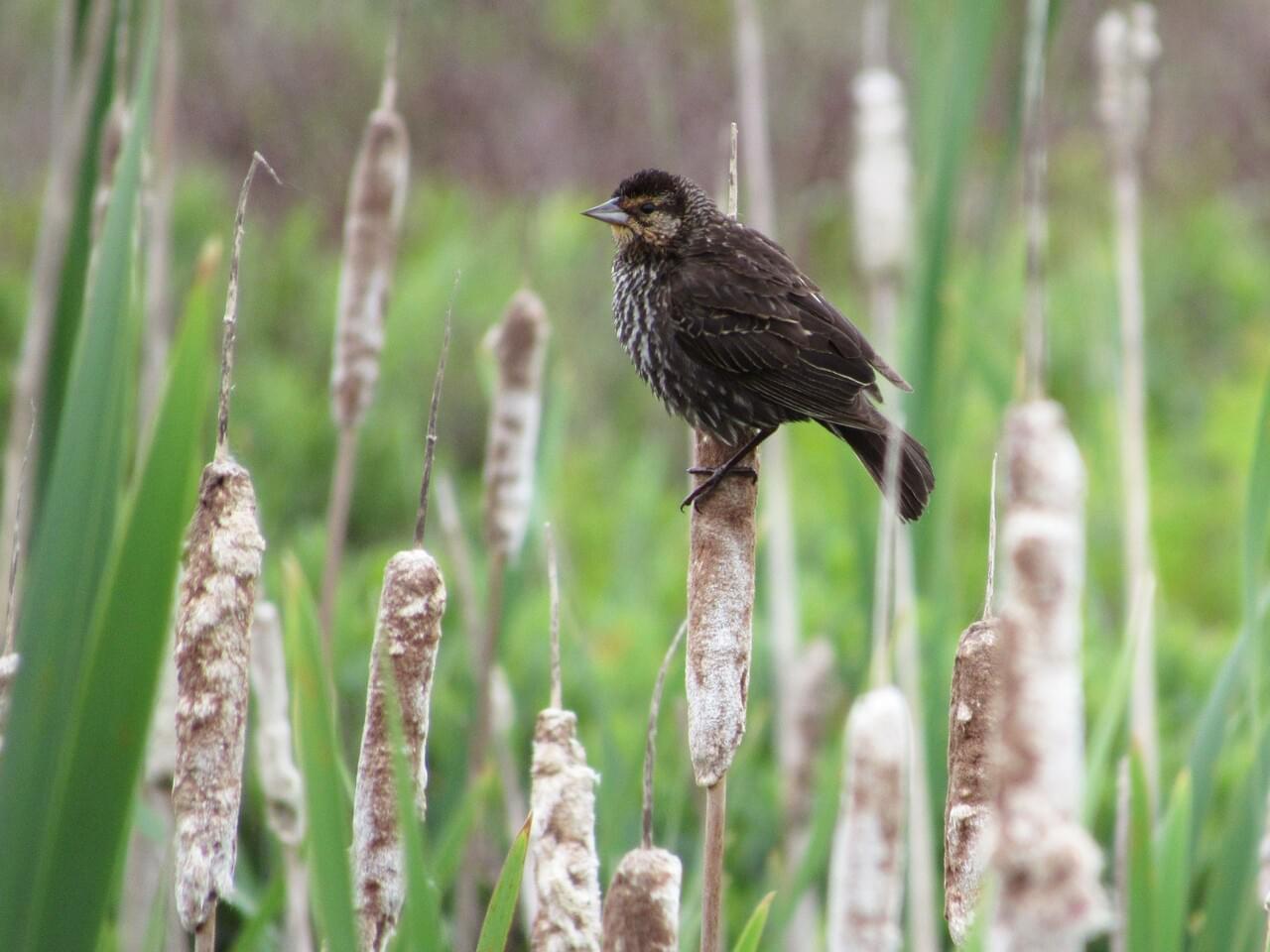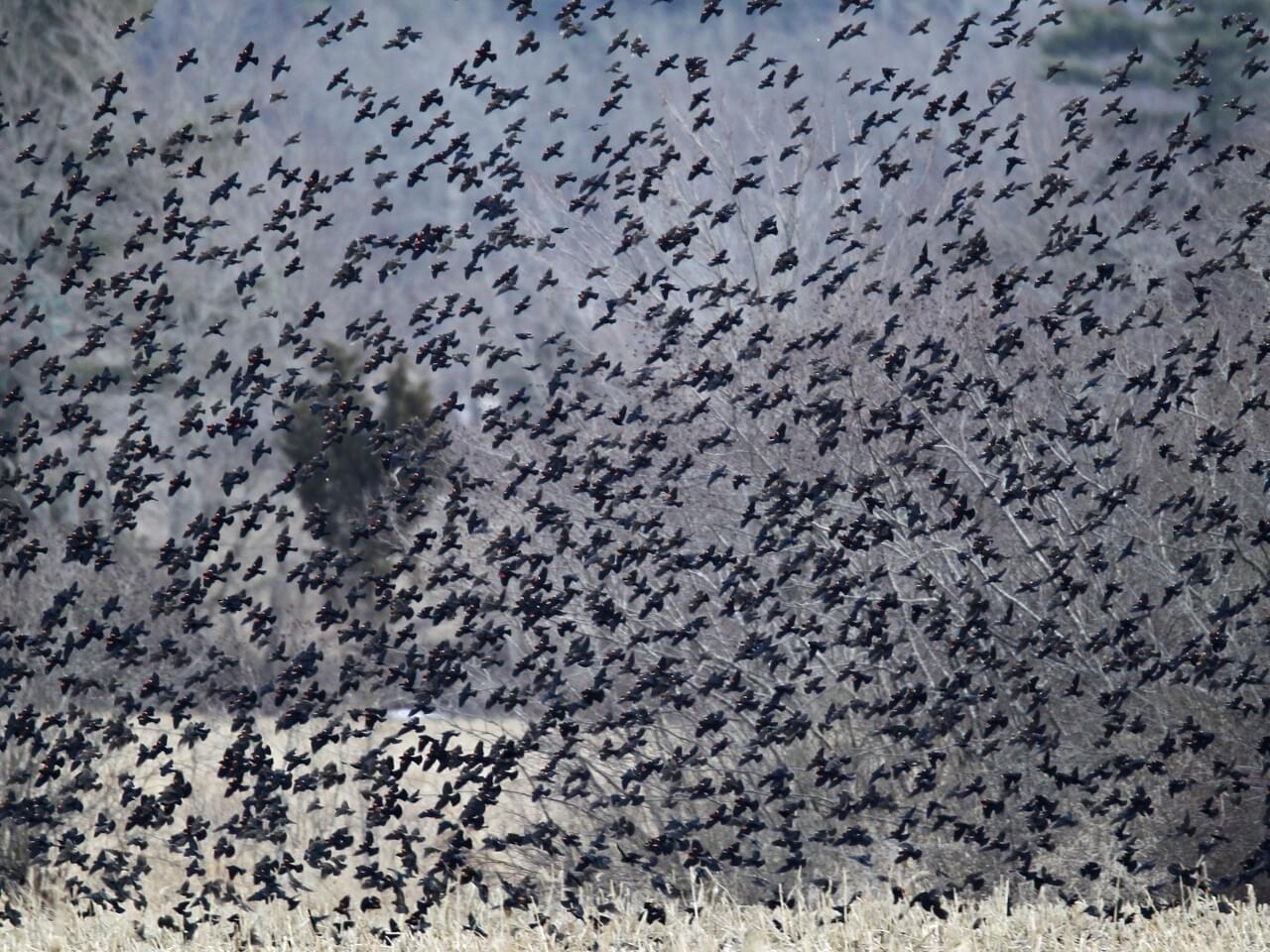 Photo ©
Laura Erickson
Photo ©
Laura Erickson
Red-winged Blackbird
Regional Species
One of the most abundant birds across North America, and one of the most boldly colored, the Red-winged Blackbird is a familiar sight atop cattails, along soggy roadsides, and on telephone wires. Glossy-black males have scarlet-and-yellow shoulder patches they can puff up or hide depending on how confident they feel. Females are a subdued, streaky brown, almost like a large, dark sparrow. Their early and tumbling song are happy indications of the return of spring.
Range
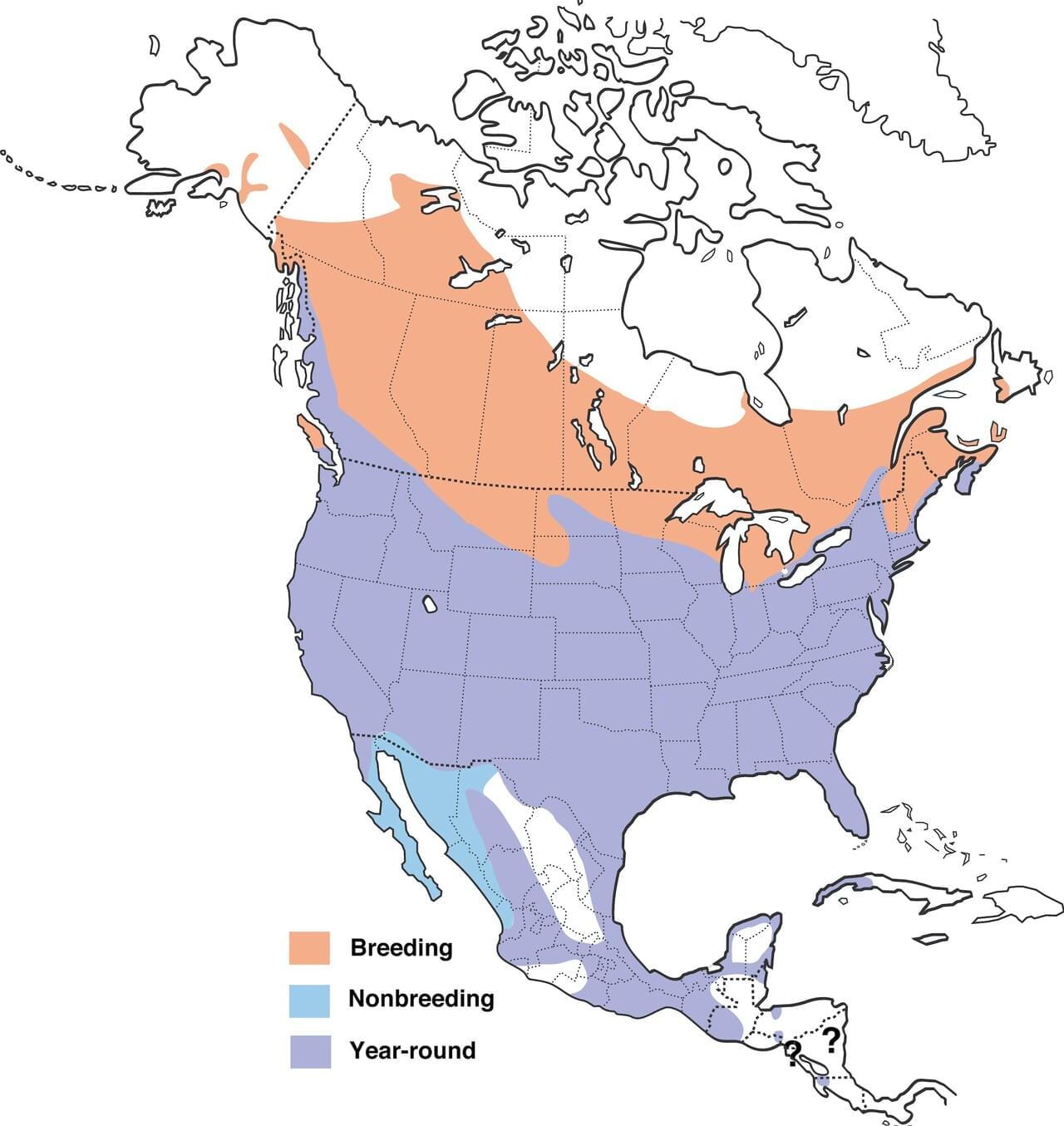
Habitat
Red-winged Blackbirds spend the breeding season in wet places like fresh or saltwater marshes and rice paddies. You may also find them breeding in drier places like sedge meadows, alfalfa fields, and fallow fields. Occasionally, Red-winged Blackbirds nest in wooded areas along waterways. In fall and winter, they congregate in agricultural fields, feedlots, pastures, and grassland.
Food
Red-winged Blackbirds eat mainly insects in the summer and seeds, including corn and wheat, in the winter. Sometimes they feed by probing at the bases of aquatic plants with their slender bills, prying them open to get at insects hidden inside. In fall and winter they eat weedy seeds such as ragweed and cocklebur as well as native sunflowers and waste grains.
Behavior
Male Red-winged Blackbirds spend much of the breeding season sitting on a high perch over their territories and singing their hearts out. Females tend to slink through reeds and grasses collecting food or nest material. Both males and females defend nests from intruders and predators. Red-winged Blackbirds nest in loose groups in part because appropriate marshy habitat is scarce. Typically five or more (up to 15) females have to crowd their nests into any one male’s territory. They typically mate with the territory holder, though many also mate with nearby males. In fall and winter, Red-winged Blackbirds flock with other blackbirds, grackles, cowbirds, and starlings, feeding on open ground and roosting in flocks of thousands or millions of birds. Red-winged Blackbirds are strong, agile fliers.
Nesting
Females build the nests by winding stringy plant material around several close, upright stems and weaving in a platform of coarse, wet vegetation. Around and over this she adds more wet leaves and decayed wood, plastering the inside with mud to make a cup. Finally, she lines the cup with fine, dry grasses. One nest picked apart by a naturalist in the 1930s had been made by weaving together 34 strips of willow bark and 142 cattail leaves, some 2 feet long. When finished the nest is 4 to 7 inches across and 3 to 7 inches deep.
Appearance
Typical Sound
© Wil Hershberger | Macaulay Library
Size & Shape
A stocky, broad-shouldered blackbird with a slender, conical bill and a medium-length tail. Red-winged Blackbirds often show a hump-backed silhouette while perched; males often sit with tail slightly flared.
Color Pattern
Male Red-winged Blackbirds are hard to mistake. They're an even glossy black with red-and-yellow shoulder badges. Females are crisply streaked and dark brownish overall, paler on the breast and often show a whitish eyebrow.
Plumage Photos
Similar Species
Where Tricolored and Red-winged Blackbirds overlap in California, male Tricolored Blackbirds can be distinguished by their overall glossier plumage and a white border to their epaulets (shoulder patches). Female Tricolored Blackbirds are a somewhat colder charcoal-gray overall with less streaking than female Red-winged Blackbirds. Song Sparrows and other streaky sparrows sometimes look like female Red-winged Blackbirds, though they are smaller and shorter tailed, with a shorter, thicker bill than a blackbird.
Did you know?!
- Different populations and subspecies of Red-winged Blackbirds vary markedly in size and proportions. An experiment was conducted that moved nestlings between populations and found that the chicks grew up to resemble their foster parents. This study indicated that much of the difference seen between populations is the result of different environments rather than different genetic makeups.
- The Red-winged Blackbird is a highly polygynous species, meaning males have many female mates – up to 15 in some cases. In some populations 90 percent of territorial males have more than one female nesting on their territories. But all is not as it seems: one-quarter to one-half of nestlings turn out to have been sired by someone other than the territorial male.
- Male Red-winged Blackbirds fiercely defend their territories during the breeding season, spending more than a quarter of daylight hours in territory defense. He chases other males out of the territory and attacks nest predators, sometimes going after much larger animals, including horses and people.

